Flowers and seeds -> asexual reproduction
Asexual Reproduction
Asexual reproduction is a type of reproduction that involves a single parent and results in offspring that are genetically identical to the parent. This process does not involve the fusion of gametes (sex cells) and does not result in genetic variation among the offspring.
Methods of Asexual Reproduction:
- Budding: In budding, a new organism develops from an outgrowth or bud on the parent organism. The bud grows and eventually separates to form a new, genetically identical organism.
- Binary fission: Binary fission is common in single-celled organisms, such as bacteria and protists. The parent organism divides into two equal parts, each of which grows into a new organism.
- Vegetative propagation: This method is common in plants, where new plants grow from specialized structures such as runners, tubers, bulbs, or corms.
- Fragmentation: In fragmentation, a parent organism breaks into pieces, with each piece growing into a new organism. This is common in organisms such as flatworms and some species of starfish.
- Parthenogenesis: In parthenogenesis, females produce offspring without fertilization by a male. This can occur in some insects, reptiles, and fish.
Advantages and Disadvantages of Asexual Reproduction:
There are several advantages and disadvantages to asexual reproduction:
- Advantages:
- Efficient and rapid reproduction
- Only one parent is required
- Well-suited for stable environments
- Disadvantages:
- Lack of genetic diversity
- Vulnerability to environmental changes and diseases
- Unable to adapt to new or changing environments
Examples of Asexual Reproduction in Nature:
Asexual reproduction is observed in various organisms in nature. Some examples include:
- Bacteria undergoing binary fission
- Hydra reproducing through budding
- Strawberry plants spreading through runners for vegetative propagation
- Starfish regenerating from fragmented pieces
- Female whiptail lizards producing offspring via parthenogenesis
Study Guide for Asexual Reproduction:
When studying asexual reproduction, consider the following key points:
- Understand the definition of asexual reproduction and its contrast to sexual reproduction.
- Learn the different methods of asexual reproduction, including budding, binary fission, vegetative propagation, fragmentation, and parthenogenesis.
- Examine the advantages and disadvantages of asexual reproduction in terms of genetic diversity, environmental adaptation, and population dynamics.
- Explore specific examples of asexual reproduction in various organisms, from bacteria and protists to plants and animals.
- Consider real-world applications and implications of asexual reproduction, such as in agriculture, disease transmission, and conservation efforts.
◂Science Worksheets and Study Guides Fifth Grade. Flowers and seeds
Study Guide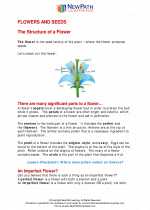 Flowers and seeds
Flowers and seeds  Activity Lesson
Activity Lesson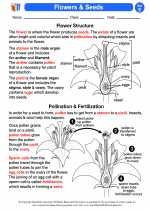 Flowers & Seeds
Flowers & Seeds  Worksheet/Answer key
Worksheet/Answer key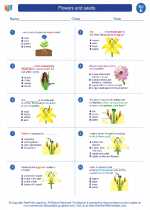 Flowers and seeds
Flowers and seeds  Worksheet/Answer key
Worksheet/Answer key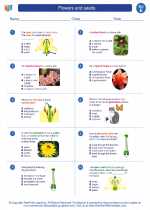 Flowers and seeds
Flowers and seeds  Worksheet/Answer key
Worksheet/Answer key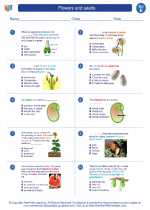 Flowers and seeds
Flowers and seeds  Worksheet/Answer key
Worksheet/Answer key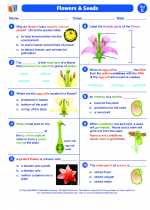 Flowers and seeds
Flowers and seeds  Vocabulary/Answer key
Vocabulary/Answer key Flowers and seeds
Flowers and seeds  Vocabulary/Answer key
Vocabulary/Answer key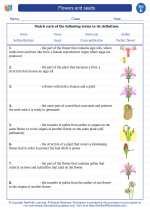 Flowers and seeds
Flowers and seeds 

 Activity Lesson
Activity Lesson
 Worksheet/Answer key
Worksheet/Answer key
 Worksheet/Answer key
Worksheet/Answer key
 Worksheet/Answer key
Worksheet/Answer key
 Worksheet/Answer key
Worksheet/Answer key
 Vocabulary/Answer key
Vocabulary/Answer key
 Vocabulary/Answer key
Vocabulary/Answer key

The resources above cover the following skills:
Life Science
All organisms have structures and systems with separate functions. Students can:
Develop and communicate an evidence-based scientific explanation of the role of different organs or structures that are important for an organism's survival - in both plants and animals